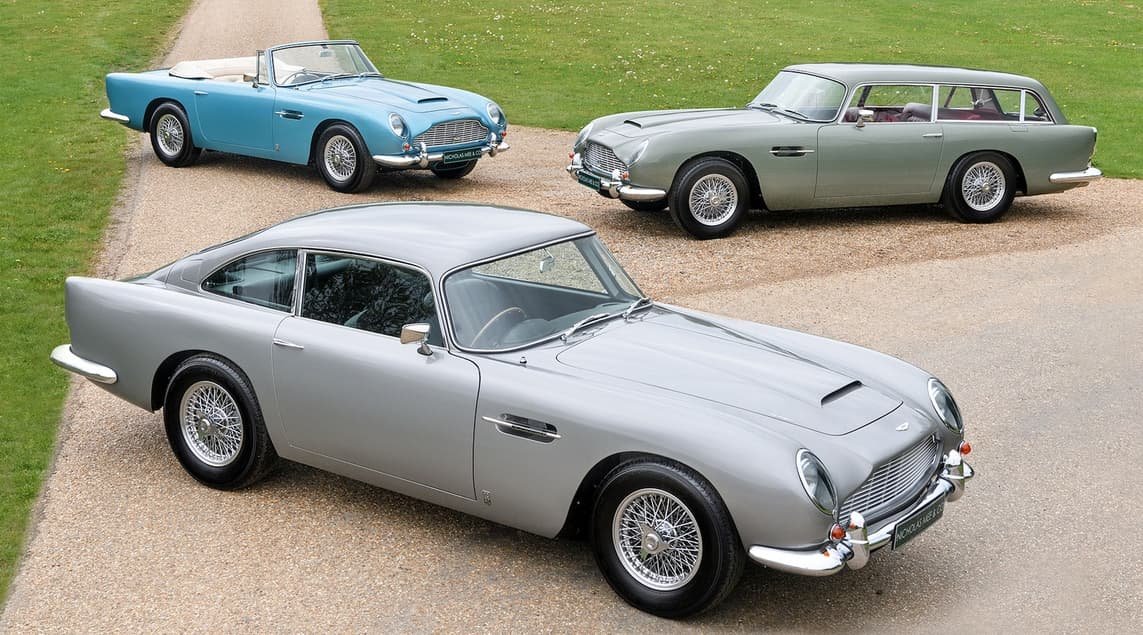Currently, if you are looking for an Aston Martin with more than two doors, the only option available is the Aston Martin DBX (test). Although it has the features and exclusivity of Gaydon’s signature cars, the DBX is an SUV and this concept is far from the company’s classic sports cars. Six decades ago, Aston Martin tried to create a DB4 four-door at the heart of the DB5, calling it the Lagonda Rapide.
The Lagonda brand has tried to come out on top several times since joining Aston Martin in 1948. The most successful attempt was the Aston Martin Lagonda designed in the late 1970s by William Towns. However, more than a decade earlier, in 1961, the company already tried to create a vehicle under this brand that was based on existing Aston Martin products.
Lagonda Rapide (1961), a four-door Aston Martin DB4
The Lagonda Rapide, which took its name from one of the marque’s prominent models of the late 1930s, was so exclusive that only 55 units were built between 1961 and 1964, and all of them were made to order. For its conception, the brand was based on the chassis of the Aston Martin DB4, although with a 2,896 mm wheelbase instead of the original 2,489 mm.
THE INCREDIBLE STORY OF THE ASTON MARTIN DB5
The Rapide’s aluminum Superleggera body was commissioned by Aston Martin to Milan-based Carrozzeria Touring, the bodybuilder tasked with also outfitting the DB4. The chassis was redesigned at the rear to integrate the De Dion axle, instead of the original DB4 rear axle, and rear seats and four side doors were equipped.

At the design level, the Lagonda Rapide was a product with its own character, far from the aesthetics of Aston Martin. The front end sported quad headlamps, a vertical split grille, and two horizontal grilles on a metal bumper.
From the side, some typical Aston features were appreciated, such as the silhouette of the hood, the shape of the roof and windows, the wheel arches or the elongated rear section, which integrated a large rear overhang. And at the rear, some vertical pilots with pointed ends, a metal bumper to match the front and a tailgate that also reminded Aston Martin were preserved.
A high-end interior and the engine of the DB5
The interior of the Lagonda Rapide combined luxury and good finishes. A wood and metal steering wheel, wood inserts on the dashboard, a multitude of clocks on the instrument panel, and spacious leather-upholstered seats. Some comfort technologies were also integrated, such as power windows, picnic tables in the rear, remote release of the fuel filler cap, and a radio.
Although it was based on a modified version of the DB4 chassis with a body of its own design, the Lagonda Rapide did not retain its mechanics. Instead of the 3.7-litre inline six, Aston Martin opted for the DB5 engine, which in this case was also a six-cylinder, but with 4.0 litres. Power was also restricted so as not to rival the DB5, so it offered 236 hp instead of 282 hp (325 hp in the DB5 Vantage).

The engine was linked to a ZF five-speed manual transmission that sent power to the rear end. In this way, the Rapide could reach speeds of up to 210 km/h. The intention of David Brown, owner of Aston Martin and Lagonda, was for the Rapide to be the “most mechanically advanced automobile available”.
Despite the efforts of the Lagonda company to market the vehicle, only 55 Rapides were built, all of them by hand and to order. Its new price was £5,000, which was also 25% more expensive than the Aston Martin DB4. Only 48 units of the Lagonda Rapide are believed to survive worldwide today.



